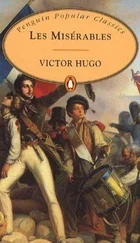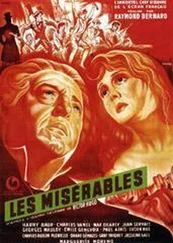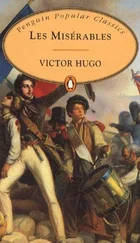Lascelles Wraxall - Les Misérables, v. 2
Здесь есть возможность читать онлайн «Lascelles Wraxall - Les Misérables, v. 2» — ознакомительный отрывок электронной книги совершенно бесплатно, а после прочтения отрывка купить полную версию. В некоторых случаях можно слушать аудио, скачать через торрент в формате fb2 и присутствует краткое содержание. Жанр: literature_19, foreign_antique, foreign_prose, на английском языке. Описание произведения, (предисловие) а так же отзывы посетителей доступны на портале библиотеки ЛибКат.
- Название:Les Misérables, v. 2
- Автор:
- Жанр:
- Год:неизвестен
- ISBN:нет данных
- Рейтинг книги:5 / 5. Голосов: 1
-
Избранное:Добавить в избранное
- Отзывы:
-
Ваша оценка:
- 100
- 1
- 2
- 3
- 4
- 5
Les Misérables, v. 2: краткое содержание, описание и аннотация
Предлагаем к чтению аннотацию, описание, краткое содержание или предисловие (зависит от того, что написал сам автор книги «Les Misérables, v. 2»). Если вы не нашли необходимую информацию о книге — напишите в комментариях, мы постараемся отыскать её.
Les Misérables, v. 2 — читать онлайн ознакомительный отрывок
Ниже представлен текст книги, разбитый по страницам. Система сохранения места последней прочитанной страницы, позволяет с удобством читать онлайн бесплатно книгу «Les Misérables, v. 2», без необходимости каждый раз заново искать на чём Вы остановились. Поставьте закладку, и сможете в любой момент перейти на страницу, на которой закончили чтение.
Интервал:
Закладка:
CHAPTER V
THE QUID OBSCURUM OF BATTLES
All the world knows the first phase of this battle; a troubled, uncertain, hesitating opening, dangerous for both armies, but more so for the English than the French. It had rained all night; the ground was saturated; the rain had collected in hollows of the plain as in tubs; at certain points the ammunition wagons had sunk in up to the axle-trees and the girths of the horses; if the wheat and barley laid low by this mass of moving vehicles had not filled the ruts, and made a litter under the wheels, any movement, especially in the valleys, in the direction of Papelotte, would have been impossible. The battle began late; for Napoleon, as we have explained, was accustomed to hold all his artillery in hand like a pistol, aiming first at one point, then at another of the battle, and he resolved to wait until the field batteries could gallop freely, and for this purpose it was necessary that the sun should appear and dry the ground. But the sun did not come out; it was no longer the rendezvous of Austerlitz. When the first cannon-shot was fired, the English General Colville drew out his watch, and saw that it was twenty-five minutes to twelve.
The action was commenced furiously, more furiously perhaps than the Emperor desired, by the French left wing on Hougomont. At the same time Napoleon attacked the centre by hurling Quiot's brigade on La Haye Sainte, and Ney pushed the French right wing against the English left, which was leaning upon Papelotte. The attack on Hougomont was, to a certain extent, a feint, for the plan was to attract Wellington there, and make him strengthen his left. This plan would have succeeded had not the four companies of Guards and Perponcher's Belgian division firmly held the position; and Wellington, instead of massing his troops, found it only necessary to send as a reinforcement four more companies of Guards and a battalion of Brunswickers. The attack of the French right on Papelotte was serious; to destroy the English left, cut the Brussels road, bar the passage for any possible Prussians, force Mont St. Jean, drive back Wellington on Hougomont, then on Braine l'Alleud, and then on Halle, – nothing was more distinct. Had not a few incidents supervened; this attack would have succeeded, for Papelotte was taken and La Haye Sainte carried.
There is a detail to be noticed here. In the English Infantry, especially in Kempt's brigade, there were many recruits, and these young soldiers valiantly withstood our formidable foot, and they behaved excellently as sharp-shooters. The soldier when thrown out en tirailleur , being left to some extent to his own resources, becomes as it were his own general; and these recruits displayed something of the French invention and fury. These novices displayed an impulse, and it displeased Wellington.
After the taking of La Haye Sainte, the battle vacillated. There is an obscure interval in this day, between twelve and four; the middle of this battle is almost indistinct, and participates in the gloom of the mêlée. A twilight sets in, and we perceive vast fluctuations in this mist, a dizzying mirage, the panoply of war at that day, unknown in our times; flaming colpacks; flying sabretaches; cross-belts; grenade pouches; Hussar dolmans; red boots with a thousand wrinkles; heavy shakos enwreathed with gold twist; the nearly black Brunswick infantry mingled with the scarlet infantry of England; the English soldiers wearing clumsy round white cushions for epaulettes; the Hanoverian light horse with their leathern helmets, brass bands, and red horse-tails; the Highlanders with their bare knees and checkered plaids, and the long white gaiters of our grenadiers, – pictures but not strategic lines; what a Salvator Rosa, but not a Gribeauval, would have revelled in.
A certain amount of tempest is always mingled with a battle, quid obscurum, quid divinum. Every historian traces to some extent the lineament that pleases him in the hurly-burly. Whatever the combination of the generals may be, the collision of armed masses has incalculable ebbs and flows; in action the two plans of the leaders enter into each other and destroy their shape. The line of battle floats and winds like a thread, the streams of blood flow illogically, the fronts of armies undulate, the regiments in advancing or retiring form capes or gulfs, and all these reefs are continually shifting their position; where infantry was, artillery arrives; where artillery was, cavalry dash in; the battalions are smoke. There was something there, but when you look for it, it has disappeared; the gloomy masses advance and retreat; a species of breath from the tomb impels, drives back, swells, and disperses these tragic multitudes. What is a battle? An oscillation. The immobility of a mathematical plan expresses a minute and not a day. To paint a battle, those powerful painters who have chaos in their pencils are needed. Rembrandt is worth more than Vandermeulin, for Vandermeulin, exact at mid-day, is incorrect at three o'clock. Geometry is deceived, and the hurricane alone is true, and it is this that gives Folard the right to contradict Polybius. Let us add that there is always a certain moment in which the battle degenerates into a combat, is particularized and broken up into countless detail facts which, to borrow the expression of Napoleon himself, "belong rather to the biography of regiments than to the history of the army." The historian, in such a case, has the evident right to sum up; he can only catch the principal outlines of the struggle, and it is not given to any narrator, however conscientious he may be, absolutely to fix the form of that horrible cloud which is called a battle.
This, which is true of all great armed collisions, is peculiarly applicable to Waterloo; still, at a certain moment in the afternoon, the battle began to assume a settled shape.
CHAPTER VI
FOUR O'CLOCK IN THE AFTERNOON
At about four o'clock P.M. the situation of the English army was serious. The Prince of Orange commanded the centre, Hill the right, and Picton the left. The Prince of Orange, wild and intrepid, shouted to the Dutch Belgians: "Nassau! Brunswick! never yield an inch." Hill, fearfully weakened, had just fallen back on Wellington, while Picton was dead. At the very moment when the English took from the French the flag of the 105th line regiment, the French killed General Picton with a bullet through his head. The battle had two bases for Wellington, Hougomont and La Haye Sainte. Hougomont still held out, though on fire, while La Haye Sainte was lost. Of the German battalion that defended it, forty-two men only survived; all the officers but five were killed or taken prisoners. Three thousand combatants had been massacred in that focus; a sergeant of the English Guards, the first boxer of England, and reputed invulnerable by his comrades, had been killed there by a little French drummer. Baring was dislodged, and Alten was sabred; several flags had been lost, one belonging to Alten's division and one to the Luxembourg battalion, which was borne by a Prince of the Deux-ponts family. The Scotch Grays no longer existed; Ponsonby's heavy dragoons were cut to pieces, – this brave cavalry had given way before the lancers of Bro and the cuirassiers of Travers. Of twelve hundred sabres only six hundred remained; of three lieutenant-colonels, two were kissing the ground, Hamilton wounded, and Mather killed. Ponsonby had fallen, pierced by seven lance wounds; Gordon was dead, March was dead, and two divisions, the fifth and sixth, were destroyed. Hougomont attacked, La Haye Sainte taken; there was only one knot left, the centre, which still held out, Wellington reinforced it; he called in Hill from Merbe-Braine and Chassé from Braine l'Alleud.
The centre of the English army, which was slightly concave, very dense and compact, was strongly situated; it occupied the plateau of Mont St. Jean, having the village behind it, and before it the slope, which at that time was rather steep. It was supported by that strong stone house, which at that period was a domainial property of Nivelles, standing at the cross-road, and an edifice dating from the 16th century, so robust that the cannon-balls rebounded without doing it any injury. All round the plateau the English had cut through the hedges at certain spots, formed embrasures in the hawthorns, thrust guns between branches and loop-holed the shrubs, – their artillery was ambuscaded under the brambles. This Punic task, incontestably authorized by the rules of war which permit snares, had been so well effected that Haxo, who had been sent by the Emperor at eight o'clock to reconnoitre the enemy's batteries, returned to tell Napoleon that there was no obstacle, with exception of the barricades blocking the Nivelles and Genappe roads. It was the season when the wheat is still standing, and along the edge of the plateau a battalion of Kempt's brigade, the 95th, was lying in the tall corn. Thus assured and supported, the centre of the Anglo-Dutch army was in a good position.
Читать дальшеИнтервал:
Закладка:
Похожие книги на «Les Misérables, v. 2»
Представляем Вашему вниманию похожие книги на «Les Misérables, v. 2» списком для выбора. Мы отобрали схожую по названию и смыслу литературу в надежде предоставить читателям больше вариантов отыскать новые, интересные, ещё непрочитанные произведения.
Обсуждение, отзывы о книге «Les Misérables, v. 2» и просто собственные мнения читателей. Оставьте ваши комментарии, напишите, что Вы думаете о произведении, его смысле или главных героях. Укажите что конкретно понравилось, а что нет, и почему Вы так считаете.












